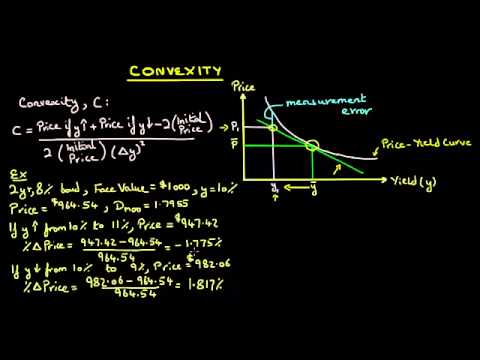Contents
The most notable example is seasonal production and year-round consumption. In the West, Orange juice is consumed to a great extent throughout the year. But the production (i.e., reaping or harvesting) of oranges is basically seasonal. So the seasonal availability of oranges has to be reconciled to the year-round demand for orange juice.
For example, the inventory management software should automatically track the various costs and store the details in the system. The software must enable you to manage your business inventory in a centralised manner. Good inventory management software is not about a bunch of single modules operating separately.
- The significance of inventory management in the demand-supply chain provides updated and direct sales forecasting information, which assists the sales and marketing group in planning for future inventory needs.
- Our inventory management solutions acknowledge such challenges and allow defining of criteria and priorities to ensure regular stock rotation.
- The output from MPS includes quantities of an item to be produced, due dates, and quantities available to promise.
- The importance of inventory management in the supply chain is that it is the sustained key to success.
Master production scheduling is the process that helps manufacturers plan which products and related quantities to produce during certain periods. It is proactive, driving the production process by determining what should be manufactured and what materials should be purchased. In the first type of uncertainly the customer may demand more than what he had actually planned.
It involves the classification of inventories into fast-moving, slow-moving and non-moving stock for deciding the pace at which a business can place orders. • Rapid transfer of data reporting informal and short communication channels and necessitates integration. • Any development or change in any one function or department has its impact on other functions. While you can also join your live online class from a phone or tablet if it supports Zoom software, we recommend you attend classes from a PC/Laptop/Mac.
Balancing of inventories, therefore, attempts to link the economies of manufacturing with the variations of consumption. When the demand for a product is concentrated in a very short selling season, manufacturers, functions of inventory wholesalers, and retailers are forced to plan about stocking of goods in advance of the point of selling period. In our country we can take the example of a particular festival season, say Diwali.
Inventory management and supply chain management
Therefore, optimizing these activities are making the operations efficient and accurate. Understanding the objectives of logistics management can help organizations to boost profitability and enhance the customer experience. Therefore, implementing and executing efficient logistics functions allow companies to gain a substantial competitive advantage. Choosing the right suppliers is the responsibility of the Procurement organization. For example, achieving just-in-time availability depends on having reliable, qualified suppliers that can meet specific delivery timelines. If they miss scheduled shipping dates, production and customer orders may be delayed, resulting in decreased customer satisfaction.
Finally, planning systems help determine inventory policies for setting safety stock levels basically taking the guesswork out of inventory decisions and their potential negative impact on cash flow. As it concerns profit margins, inventory control is one of the more visible and appreciable aspects of the manufacturing business today. Raw materials, goods in process, and finished goods are each the visible consequences of inventory in some form or fashion, and each means actual money locked up until product is finally shipped out to the customer. The longer any of these aspects stands idle in the shop, the longer company dollars get tied up in inventory carrying costs. Conversely, the shorter the time inventory stays on-hand, the greater are the enhancements to the bottom-line.
Build Schedule Report – Reports the build schedule for one or all assemblies. You should schedule at least a few months out and check to see if any changes are needed every so often. Product List – A product list consists of all the types of products you manufacture. Tybms sem 6 results 2019 declared on 19th...Tybms sem 6 results 2019 declared on 19th...

The three types of inventory include raw materials, work-in-progress, and finished goods. This balance can also be achieved by using point-of-sale data for inventory management in the retail industry and sharing this data with relevant mutually beneficial parties. Proper logistics management ensures the managing and monitoring of the fleets in real-time to make data-driven decisions and enhance the overall supply chain strategy.
Event Marketing Question Bank 2019 SYBMS
Geographical separation also requires manufactured goods from various locations to be collected at a stage warehouse. These are then combined as a mixed product shipment and sent to the required destination. The cost of shortage, i.e., what is lost if the stock is insufficient to meet all demand. In simple terms, productivity is the positive relationship of output viz-a-viz inputs. Inventory management can be considered an important facet of output & input management. Data moved to ODS mostly on event based rather than time based ETL to Data Warehouse/Data Mart.
It is critical for each company to manage its inventory effectively with no excess stock stored and meeting the client requirements. Inventory management is primarily specifying the placement of stocked goods. The main objective of inventory management in global supply chain management is to keep its products safe.

In this way, inventory functions as a protection against the unexpected, and as a buffer against production shutdowns. Safety stock represents a balance between service or fill rates and the additional cost of ordering and holding more inventory. The consequence of not having enough inventory are stock-outs, which can be detrimental to a business especially if customers have alternatives, such as ecommerce-based businesses where rapid fulfillment is expected. Stock-outs represent lost revenue and can adversely affect customer loyalty. The primary function of inventory is to use marketing and production to increase profitability, to get the maximum amount for the business' investment. There are other functions of inventory, such as balancing supply and demand, improving efficiency, establishing a safety stock and geographical specialization.
These components and sub assemblies make up a variety of finished products. The master production schedule should therefore take place at the subassembly level. With ever-changing customer tastes and preferences, there may be increased demand for a product to meet as a business.
Businesses can order an extra quantity of inventory as buffer stock above the projected demand. It also involves labeling which provides essential information about the goods such as date of manufacturing and expiry, price ingredients, and so on. It is a critical element that is used for damage prevention and enhancing material handling. Period Summary Forecast– Forecast by line item within a product group for each period through the future 12 periods, with summaries by period for the group and by year for line items. Demand Tracking Report – Provides historical data on actual shipments and order bookings as compared to management forecasts.
Popular inventory control methods in use
TallyPrime supports flexible units of measure which is useful for proper stock management. It also supports job work features which provide insights into material and job status. The software tool enables automation in generation of re-order status reports which has information of the quantities that must be ordered. Fulfill orders, track payment status, returns, freights, shipping, balance, and credit more easily and securely with the warehouse management system software. Our inventory control software also helps you maintain a database of customers, their order histories, and customer-specific defaults. Along with customers, you can also manage vendor lists, orders and order histories.
No two business functions are alike and similarly, the inventory management system must enable you to customise and define parameters as per your needs. Right from organising stock your way to moulding business processes such as sales, purchases, etc. TallyPrime is one of the most flexible business management software solutions to manage your inventories. A production team must maintain a good equation with the sales and marketing teams since the latter two teams work closely with customers. It will help them decide the levels of inventories, such as the maximum and minimum limits. A business owner can understand whether or not raw materials are going to get obsolete before production begins.

Instead of leveraging inventory management systems, you can perform cycle counting to take complete physical inventories. Or businesses can use both techniques side-by-side to verify inventory quantities and values. Master Production Scheduling is included in modern Advanced Planning and Scheduling software that is part of a manufacturing ERP system. APS uses the master https://1investing.in/ production schedule to help evaluate the best options for production considering available stock and capacity. It is a huge time saver, reducing the time it takes to manage your production flow. Also the Inventory management is a very important function that determines the health of the supply chain as well as the impacts the financial health of the balance sheet.
The 7 Functions of Logistics Management
It requires advanced preparation and decision to produce the ideal quantity to meet the demand. This step requires planning to re-stock the raw materials within a committed time to produce the finished products to the customer. The timely maintenance and accurate stocking of goods is the vital function of inventory management.
The inventory balances, setting targets, providing replenishment techniques, reporting actual and projected inventory status. Inventory Management refers to maintaining , for a given financial investment, an adequate supply of something to meet an expected demand pattern. Its function is torun the jobs or reports scheduled and can be monitored using Broadcast Agent Console.
It acts as a platform which interconnects different components like the gear box, engine, wheels, and axles. All of these components are bolted to this frame to hold the car together. In the absence of a chassis frame, neither the engine nor the wheels can fulfill their objective. We provide you with handpicked material and question banks, time-proven exam strategies, exam analyses and simulated tests to give you a hands-on real-time test experience.
This is particularly critical for companies with extended supply networks, variable demand and intense competition. Both help companies reduce costs, improve cash flow, and increase profit margins. The art of efficient inventory management is to maintain the minimal level of raw materials on hand to feed the production of the maximum quantity of finished goods at any point in time. The integrated Master Production Schedule , Materials Requirements Planning , and Bill of Materials is the engine that drives optimal inventory management.
The reliability and feasibility of data for such decision making are huge and need accurate reports. Human error in inventory updates or stock analysis might negatively affect the sales revenues and business growth. The element of information and control allows the businesses to gain clear visibility of the supply chain operations. It can help organizations to get real-time insightful data with new-age technologies. Analyzing those data is useful in evaluating overall delivery effectiveness.

